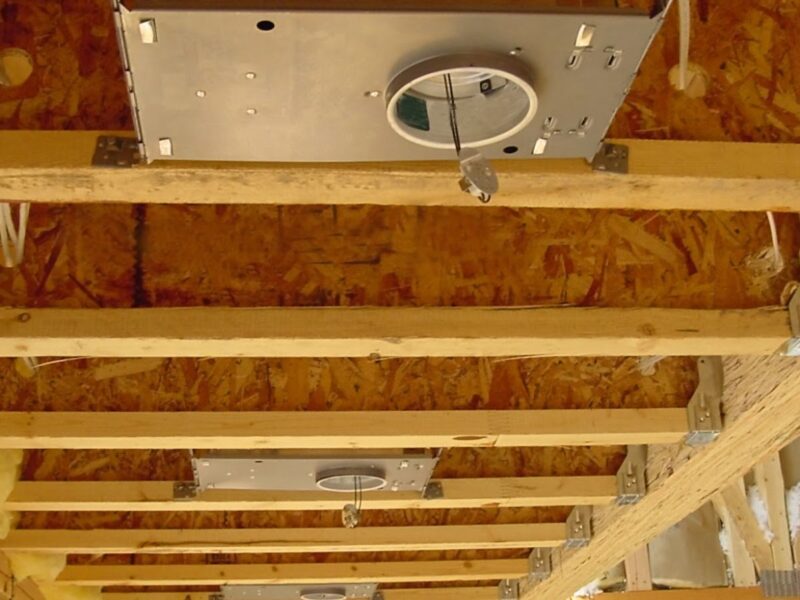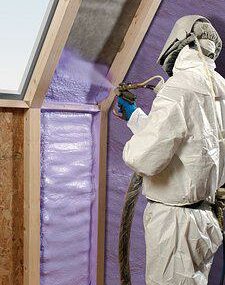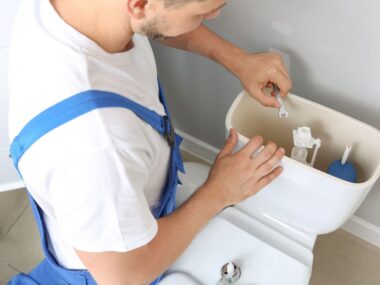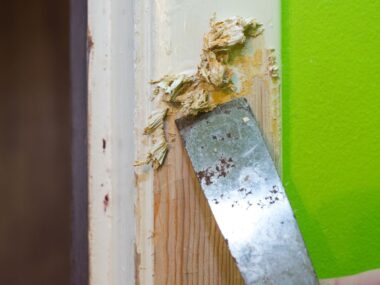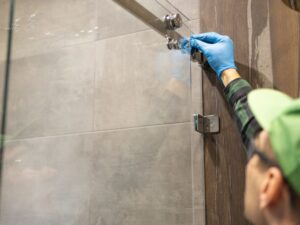We’re tackling a common challenge in the home: floor joists that have become compromised or weak. This could be due to termite damage, mold growth and rot or simply wear-and-tear over time.
The cornerstone of our solution is to “sister” the weakened joists with new lumber. This means attaching new joists alongside the old ones to create a stronger, more supportive structure. This project is not for the faint of heart – it will require some demolition work and heavy lifting – but we’re confident that you can do it!
How to sister a joist
1. Begin by evaluating the condition of your floor joists. If you see signs of damage, such as termite infestation or mold growth, it’s best to take action immediately to prevent further damage and reduce the risk of collapse.
2. Once you have identified the affected joists, carefully remove any affected sections of flooring or drywall to access the joists.
3. Cut new lumber to match the dimensions of the damaged joists. It’s important to use lumber of the same or similar strength and thickness to ensure a sturdy repair.
4. Secure the new lumber to the existing joists with nails or screws. Be sure to predrill holes to avoid splitting the wood.
5. Check your work by gently tapping on the new lumber. It should feel solid and secure. If you have any doubts about the stability of your repair, consult a professional contractor for assistance.
What sistering floor joists
Sistering is the process of reinforcing a structurally weak member by attaching a new piece of lumber alongside it. This is often done with floor joists, as over time they can become weakened by things like termite damage, mold growth, or rot. While sistering may seem like a daunting task, it’s actually not too difficult – and we’re here to walk you through the process!
The benefits of sistering floor joists
Improved stability and support, as well as better resistance to damage or decay. It is important to work with a professional contractor if you have any doubts about the condition of your floor joists or the safety of your home. But with proper planning and execution, sistering can be an effective way to extend the life of your floor system for many years to come.
Sistering floor joists is not a difficult process, but it does require some demolition work and heavy lifting. Be sure to take all necessary safety precautions and have a professional contractor available if you have any doubts about the stability of your repair.
Things to keep in mind when sistering floor joists
1. The new lumber should be of the same or similar strength and thickness as the joists being repaired.
2. The new lumber should be securely attached to the existing joists with nails or screws. Be sure to predrill holes to avoid splitting the wood.
3. Check your work by gently tapping on the new lumber. It should feel solid and secure.
4. If you have any doubts about the stability of your repair, consult a professional contractor for assistance.
